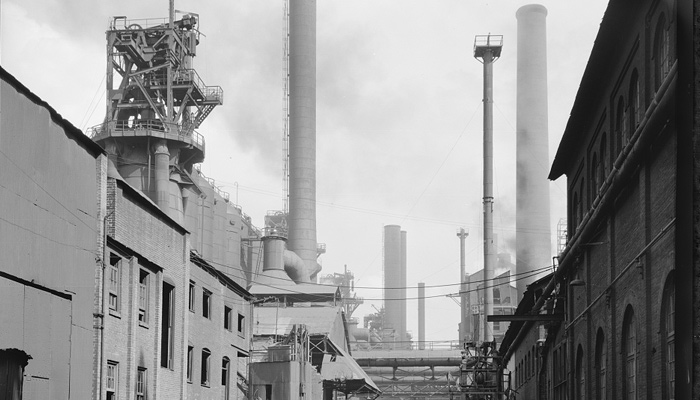
Home Is Where the Health Is
Second-tier-sized cities with strong knowledge-based economies are optimal communities for seniors who want to stay in their own homes.
“Pittsburgh has many great amenities for aging in place. Not only are we ranked one of the top cities in the country for affordability, but also, we have wonderful amenities like a bustling cultural district and many wonderful restaurants for people of all ages to enjoy.”
~Dominic Janidas, president of the Realtors® Association of Metropolitan Pittsburgh
Nestled along the confluence of the Allegheny, Monongahela and Ohio rivers, Pittsburgh has undergone a remarkable transformation over the past few decades. Once a gritty industrial powerhouse known for its steel mills and smog-filled skies—and at one time dubbed the “City of Smoke”—the city has redefined itself as a vibrant hub of innovation, education and healthcare. This evolution from an industrial giant to a knowledge-based economy has not only revitalized Pittsburgh’s economy, but has also significantly improved the quality of life for its residents while maintaining a relatively low cost of living.
The city’s transformation has not been without challenges. Decades of economic decline during Pittsburgh’s industrial downturn led to significant job emigration, which, coupled with declining birth rates, has resulted in an increasingly aging population. Today, Pittsburgh stands out as one of the oldest metropolitan areas in the United States, with approximately 18% of its population aged 65 and older, compared to the national average of around 16%.
This demographic shift has also contributed to a rising dependency ratio, reflecting a growing proportion of elderly residents who may require additional healthcare and social services. Addressing the needs of this aging population has become a central concern in terms of healthcare, housing, and social services, as the city continues to innovate and grow.
The Path from Steel City to Knowledge Hub
Pittsburgh’s history is deeply rooted in the steel industry, which dominated its economy for much of the 20th century. The city’s iconic skyline, marked by bridges and smokestacks, symbolized its industrial might. As the steel industry declined in the late 20th century, Pittsburgh faced significant economic challenges. Instead of succumbing to decay, the city embarked on a transformative journey of reinvention.
City leaders strategically invested in education, healthcare, and technology, fostering partnerships with world-class institutions like Carnegie Mellon University and the University of Pittsburgh Medical Center (UPMC). These institutions have become pillars of Pittsburgh’s new economy, driving innovation in fields such as robotics, biotechnology, and healthcare. By focusing on high-tech industries and research the city has begun to reverse its demographic decline by attracting young professionals, entrepreneurs, and researchers and injecting the city with fresh energy and ideas.
Today, Pittsburgh boasts a thriving tech scene, with major companies like Google, Uber and Facebook establishing a presence in the city. The healthcare sector, led by UPMC, has also flourished— making it one of the largest healthcare providers in the nation. This shift from an industrial to a knowledge-based economy has significantly improved the quality of life for residents: air quality has improved, rivers have been rejuvenated and the cultural scene is thriving.
While Pittsburgh’s economic renaissance still exists alongside its prior demographic reality, the city is uniquely equipped to support its aging residents. The robust healthcare infrastructure, affordable housing and strong community resources make Pittsburgh an ideal location for aging in place. The same qualities that enabled Pittsburgh to transition from a steel powerhouse to a modern urban center—resilience, innovation, and a strong sense of community—now position it as one of the best places in the nation for seniors to thrive in their own homes.
Pittsburgh: A Top City for Aging in Place
As the city continues to grow and adapt, Pittsburgh’s readiness to meet the needs of its aging population stands as a testament to its ability to honor its past while embracing the future. Aging in place—the concept of growing old in one’s home rather than moving to a retirement community or assisted living facility—has become increasingly popular among seniors (see our prior article here). Pittsburgh now ranks as one of the top cities in the nation for the growing trend, thanks to its affordability, healthcare infrastructure, and community support.
Pittsburgh is ranked fourth in the nation among the best cities for aging in place. With a cost of living well below the national average, Pittsburgh offers seniors the opportunity to maintain a high quality of life without the financial strain that can come with aging in more expensive cities. Housing costs, in particular, are significantly lower in Pittsburgh than in other major metropolitan areas, making it easier for seniors to stay in their homes as they age.
Moreover, Pittsburgh’s healthcare infrastructure is among the best in the nation. The city is home to several top-tier hospitals—including both the UPMC and AHN health systems—which provide world-class care across a range of specialties. The city also has a high number of home health and personal care aides, ensuring that seniors can receive the care they need in the comfort of their own homes.
Across the nation, smaller market, knowledge-based economies rank highest in general for quality of living; cities like Austin, Texas, and Denver, Colorado, rank highly, but carry higher costs of living. On the other hand, larger cities like Philadelphia—which also made the list—offer high-quality amenities but lack the level of healthcare excellence per capita that Pittsburgh provides based on a smaller total population footprint.
Pittsburgh’s evolution from an industrial powerhouse to a knowledge-based economy has created an environment where seniors can thrive. The city’s affordability, healthcare excellence and strong community support make it one of the best places in the nation for quality of life. As the aging-in-place market continues to grow, Pittsburgh is well-positioned to lead the way in providing innovative solutions and services that enhance the lives of its senior residents.







